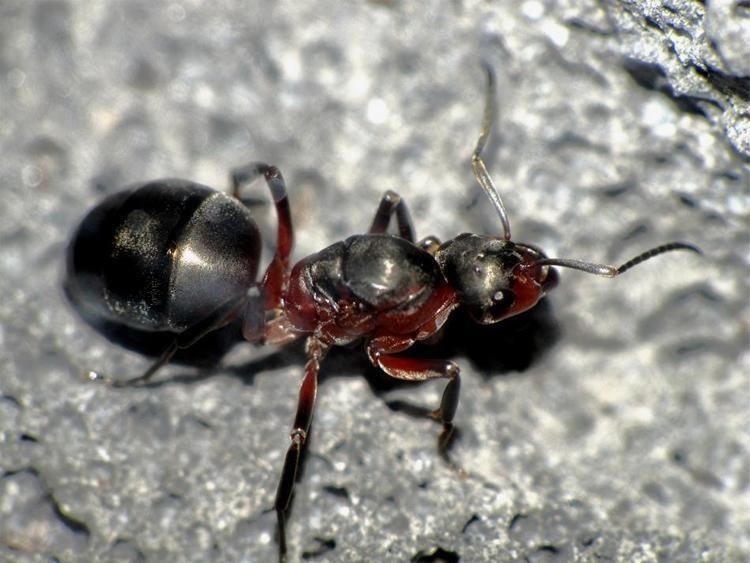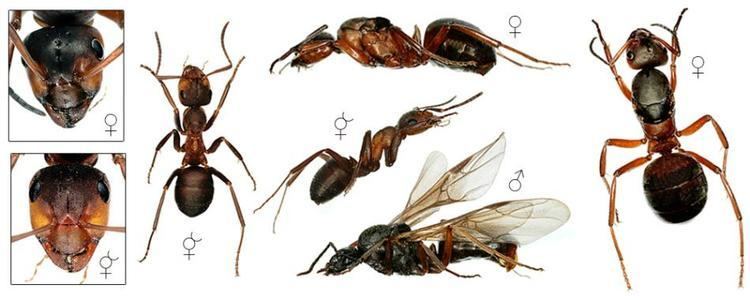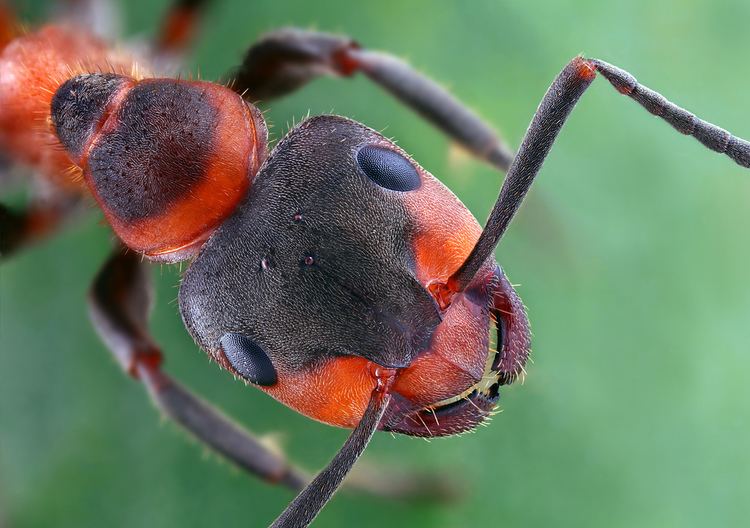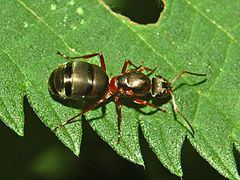Higher classification Formica | Family Formicidae Scientific name Formica pratensis Rank Species | |
 | ||
Similar Ant, Formica, Formica polyctena, Formica truncorum, Formica lugubris | ||
Giant european red wood ants in a local wood formica pratensis
Formica pratensis, the black-backed meadow ant, is a species of European red wood ant in the family Formicidae.
Contents
- Giant european red wood ants in a local wood formica pratensis
- Black backed meadow ant formica pratensis
- Systematic
- Description
- Life cycle
- Distribution
- Habitat
- References
Black backed meadow ant formica pratensis
Systematic
Formica pratensis is divided into the following subspecies:

A very similar species is Formica nigropratensis Betrem 1962. Another meadow ant, Formica nicricans Emery in 1909, was classified by Bernhard Seifert 1996 as an ecomorph of Formica pratensis.
Description

Formica pratensis can reach a length of 4.5–9.5 millimetres (0.18–0.37 in) in workers, slightly larger than in other species such as the more common southern wood ant Formica rufa or Formica polyctena. Queens reach a size of 9.5–11.3 millimetres (0.37–0.44 in). The thorax is mainly reddish, while the abdomen and the top of the head are black or dark brown. Generally this large ant is much darker than other wood species of ants. The whole body is covered of fine hairs. Two large deep black patch are present on the pronotum and mesonotum. The legs, antennae and the well-developed mouthparts are reddish or dark brown.
Life cycle

Nests are built from grasses, pine needles and straw. The diameter of the nests can reach a meter and have a single or just a few queens. The winged queens and the males can be present in nests from late April to September, as this species reflects the production of two separate generations. The first generation of ants develop from late April to mid-July, the second generation between mid-August to late September. This species mainly feeds of insects and other small animals and honeydew from the aphids.
Distribution

This species can be found in Austria, Belgium, Bulgaria, Czech Republic, Estonia, Finland, France, Georgia, Germany, Hungary, Italy, Latvia, Lithuania, Luxembourg, Moldova, Netherlands, Norway, Poland, Romania, Russia, Serbia and Montenegro, Slovakia, Spain, Sweden, Switzerland, Turkey, and the Ukraine. It is also present in the East Palearctic ecozone and in the Near East. The species is extinct in the UK since 1988. In forests weakened by pollution and acid rain in central Europe, red wood ant populations are often endangered for little known reasons which in turn causes further imbalances in predator-prey dynamics and the ecosystem.
Habitat
This species is characteristic of rough alpine pastures, up to a height of about 1,500 meters. It can be found in dry heathland, meadows and roadsides.
